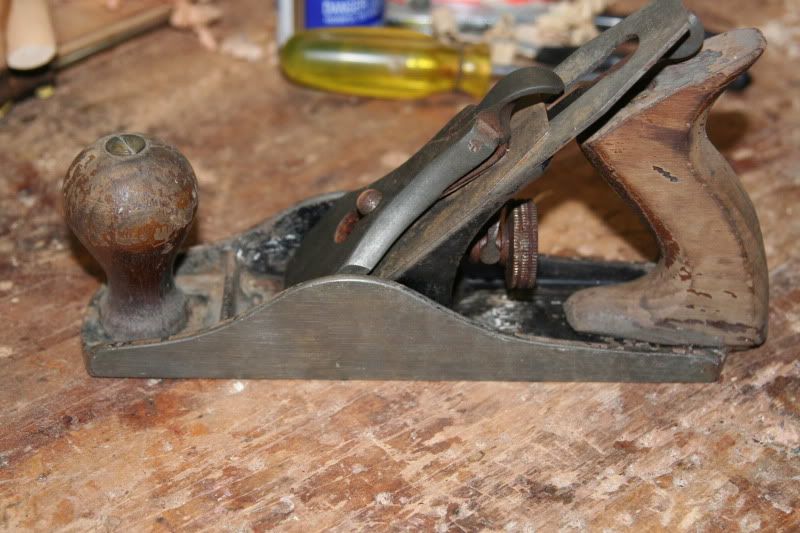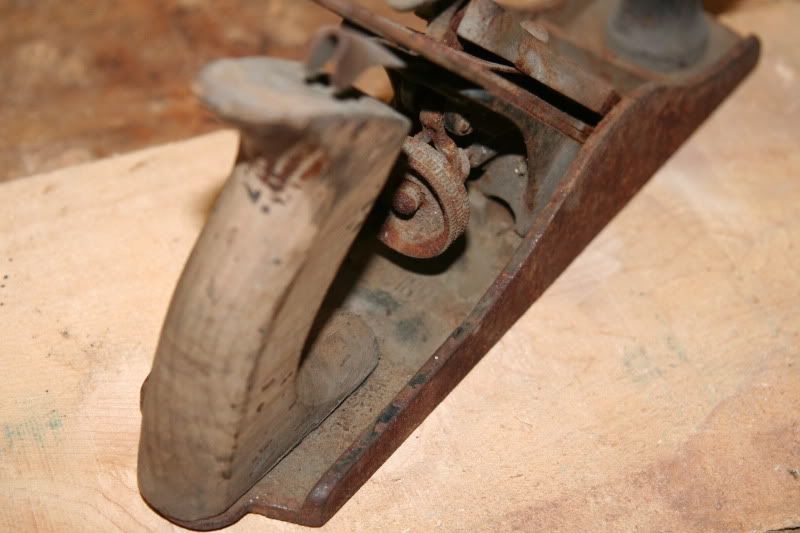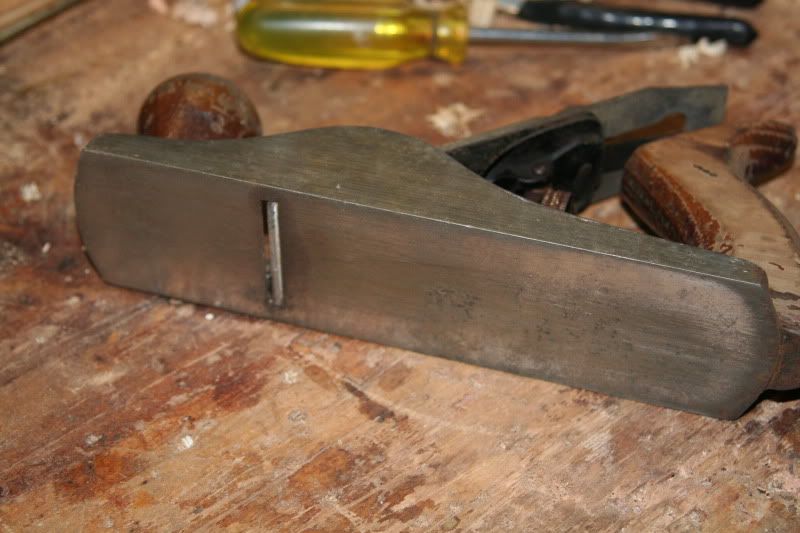Was given a plane at an estate sale which I could not identify it in the condition it was in, but rather than have it hit the trash, I wanted to see what would happen if I tried to de-rust it.
Before:
I wanted to clean it a bit, and see what it was, as the only mark discernible on any part was the MADE IN USA. All the parts were removed without incident, but it was really ugly, lots of rust and gunk all over them. The metal bits went into a vinegar bath for about 15 hours, and then received a brushing. The blade and chip breaker additionally received some rough sanding, and then I found the makers mark on the blade - it is a Fulton. Not sure the model, as there are no other marks on it but it is 9 1/2" long perhaps a #4? Wanted to see if it was worth additional effort before spending any time on the wooden bits which need some attention. I was blown away by the power of vinegar--who-da-thunkit?
After: (maybe during is better)
At this point, the blade needs some serious sharpening, but the sole is pretty much flat and I think it is worth another couple of hours of work.
Some other pics:
The sole--no before, but it was just as ugly as the sides were.
Any ideas on what model this might be? Realize Fulton is a lesser quality plane, but even if it ends up as a display, the experience has been worthwhile already.











 Reply With Quote
Reply With Quote
 Looks to be a #3 and if it is a close enough copy of a Stanley you might be able to fit a LN iron in it if the original is too pited I would keep working on it, could be decent user. Even if you don't bother getting it to cut perfectly, it is nice to have a coarser set plane to reach for at times. Worst case sceneario open up the throat, camber the heck out of the iron and you have a scrub plane.
Looks to be a #3 and if it is a close enough copy of a Stanley you might be able to fit a LN iron in it if the original is too pited I would keep working on it, could be decent user. Even if you don't bother getting it to cut perfectly, it is nice to have a coarser set plane to reach for at times. Worst case sceneario open up the throat, camber the heck out of the iron and you have a scrub plane.




